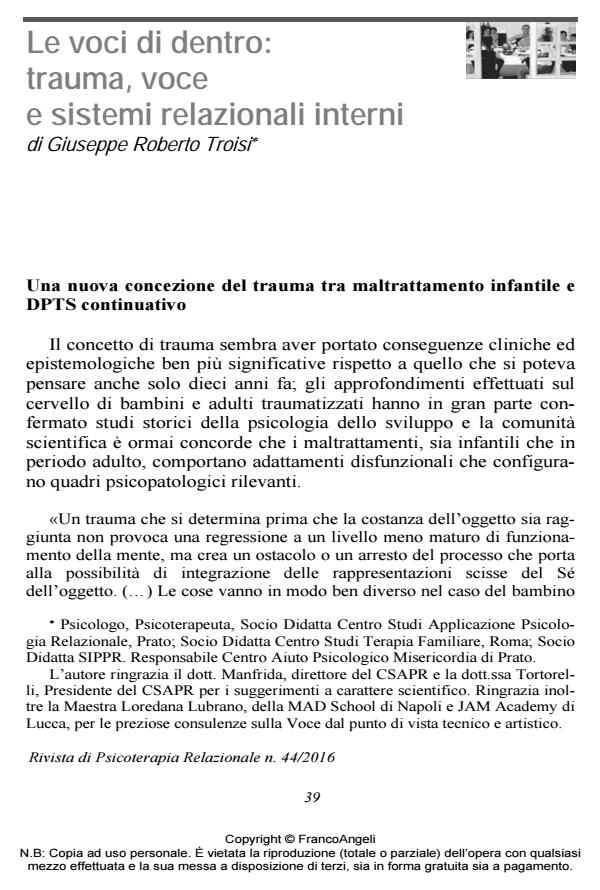The inside voices: trauma, voice, and internal relational system
Journal title RIVISTA DI PSICOTERAPIA RELAZIONALE
Author/s Giuseppe Roberto Troisi
Publishing Year 2017 Issue 2016/44
Language Italian Pages 26 P. 39-64 File size 236 KB
DOI 10.3280/PR2016-044002
DOI is like a bar code for intellectual property: to have more infomation
click here
Below, you can see the article first page
If you want to buy this article in PDF format, you can do it, following the instructions to buy download credits

FrancoAngeli is member of Publishers International Linking Association, Inc (PILA), a not-for-profit association which run the CrossRef service enabling links to and from online scholarly content.
The aim of this article is to show possible consequences to relational psychotherapy thanks to recent neuroscience discoveries. Not only the developping mind concept confirms pyoneer intuitions but it extends its meaning to the experience which is linked to the emergent relational functions, showing evidently the specularity of internal and external relational systems: the challenge concerns about the correlation between this two ways. Studies about infant maltreatments give us the opportunity to better understand this, through two observatios: first, continous infant abuse and maltreatments are the basis of personality disorders, mostly borderline disorder and attachment bonds disfunction; second, both continous maltreatments and vicarious trauma configure a disfunction which is linked to classical trauma disorders, leading to similar neuropsychological features. On the epistemological side, a reflection is necessary about a "bottom-up" interventional method which alongsides a "top-down" methods. This approach needs a even more refined preparation of psychotherapist. The author is going to describe how the relational frame can contain specific approach to trauma, starting from conscious use of patient and therapist voice and breath.
Keywords: Trauma, voice, body, therapeutical alliance, polyvagal theory, borderline personality disorder
Giuseppe Roberto Troisi, Le voci di dentro: trauma, voce e sistemi relazionali interni in "RIVISTA DI PSICOTERAPIA RELAZIONALE " 44/2016, pp 39-64, DOI: 10.3280/PR2016-044002